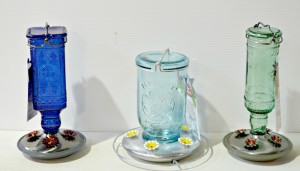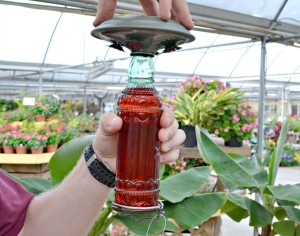Hummingbirds
One of summer’s great pleasures is to watch fast, furious and beautiful Ruby-throated Hummingbird. Of the 328 humming bird species presently recognized, the Ruby-throated Hummingbird is the only widespread hummer in the eastern United States. Hummers are known for their tiny size, iridescent jewel-like appearance and acrobatic flight. They are the only birds capable of flying backwards and upside down!
Attracting and feeding hummingbirds can be a lot of fun with little work. Flower nectar is a major part of the hummers diet but they also eat small flying insects which provide protein, vitamins and minerals that are essential for their tiny bodies.
Hummingbirds Love Flowers
In the late summer the greenhouses and perennial sections of Fairview Garden Center are literally buzzing with droves of these hungry but elusive creatures. Here are the plants whose late summer blooms are most attractive to the hummingbirds we see at Fairview:
- Shrimp Plant
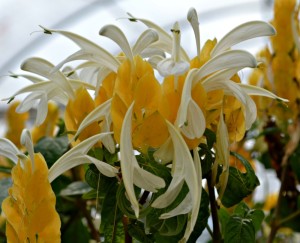
- Agastache

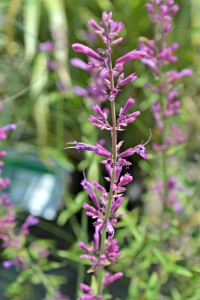
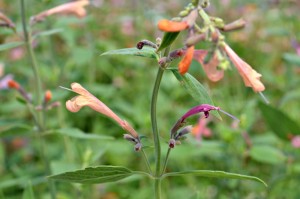 (both annual and perennial varieties)
(both annual and perennial varieties) - Salvia
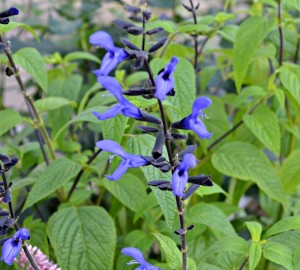
- Mandevilla
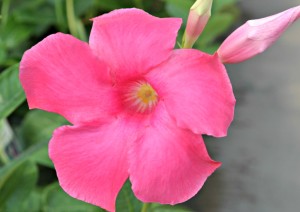
- Pentas
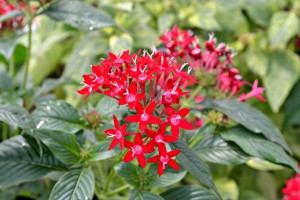
- Lantana
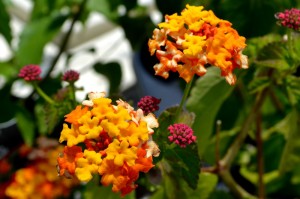 (both annual and perennial varieties)
(both annual and perennial varieties)
Feeders
When feeding hummingbirds, select a feeder that is sturdy, durable and easy to clean.
Feeders should be placed high enough to prevent predators from catching the birds while they feed. Areas that are in plain view and near flowers work best. Hummingbirds do not have to sit while eating but many do if feeders have perches. Providing a perch is the best way to watch a hummingbird while motionless.
Nectar
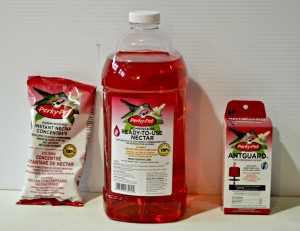
Nectar can be purchased ready to use, in a powdered form that requires mixing, or in concentrate. Or, make your nectar from scratch with this recipe:
- 4 parts water
- 1 part granulated sugar
- Bring mixture to a boil, stir until sugar is dissolved, let cool and fill feeder
Molasses, artificial sweeteners, or honey should never be used as they are not a natural food for hummingbirds and provide little to no nutritional value to the birds. There is no need to add red food coloring to the liquid. Red color attracts the birds attention but most feeders have red parts or red ribbon can be tied to feeders.
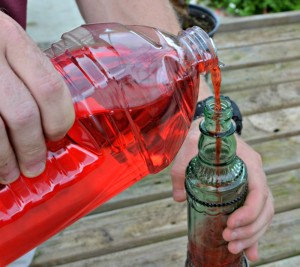
Feeders must be kept clean. I recommend washing them with a bleach solution of one part bleach to ten parts water each time feeders are refilled with nectar. Be sure to rinse thoroughly. Nectar should be replaced every three to five days depending on air temperature and the amount of direct sunlight the feeder receives. Nectar will spoil and hummers will not drink fermented nectar. Fresh nectar is essential or you will lose the birds as they will move on to other areas and feeders.
Hummers are usually in central North Carolina by mid April and usually leave in mid September to early October. Leaving your feeders out too long will not keep hummers from migrating. Healthy birds will leave on schedule and your feeder may provide a life saving energy boost for weak or injured stragglers.
This summer add a few jewels to your life. Do not forget to include a viewing place in your graden to watch the fast and furious hummers as they enjoy summer.
Susan Rollins





